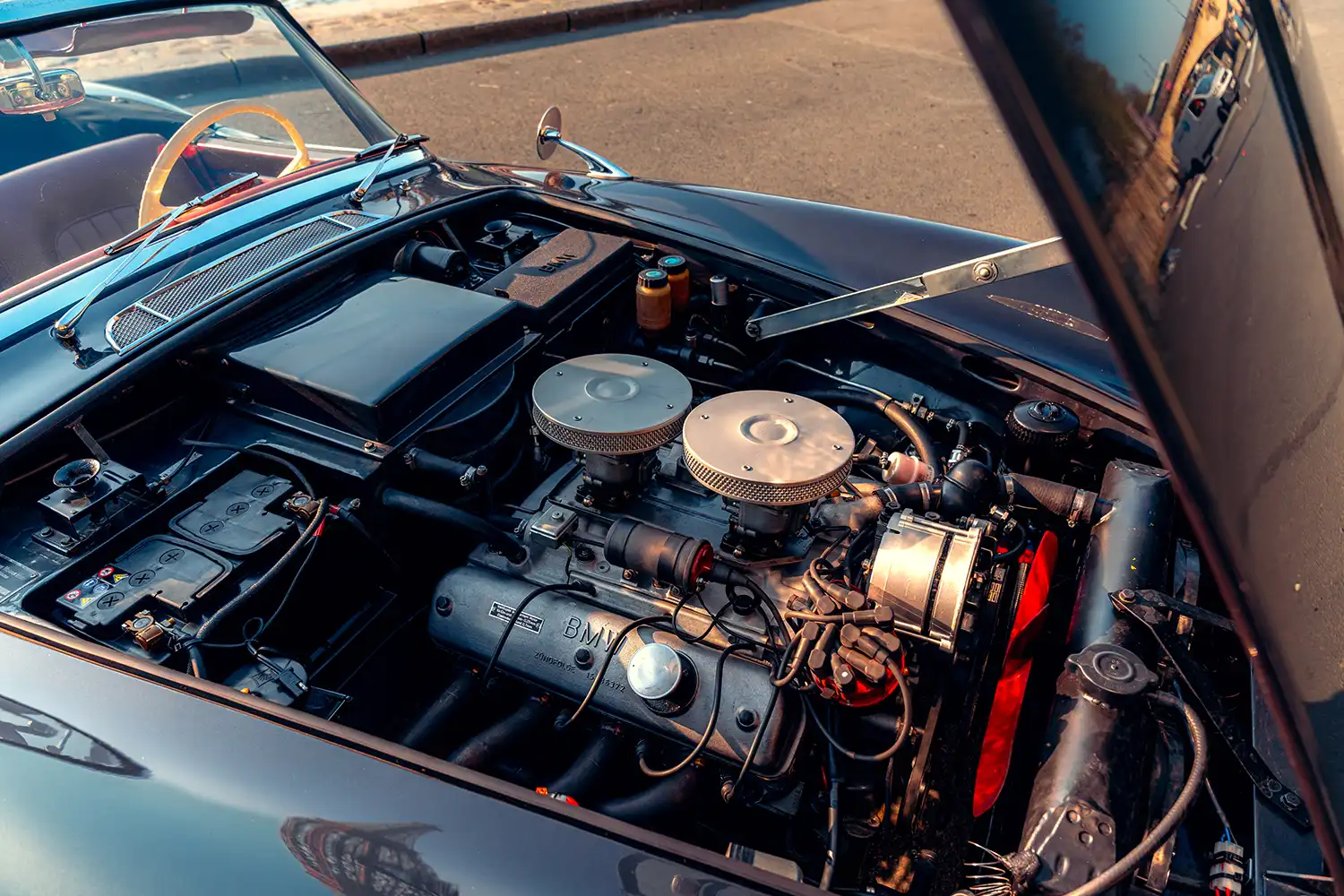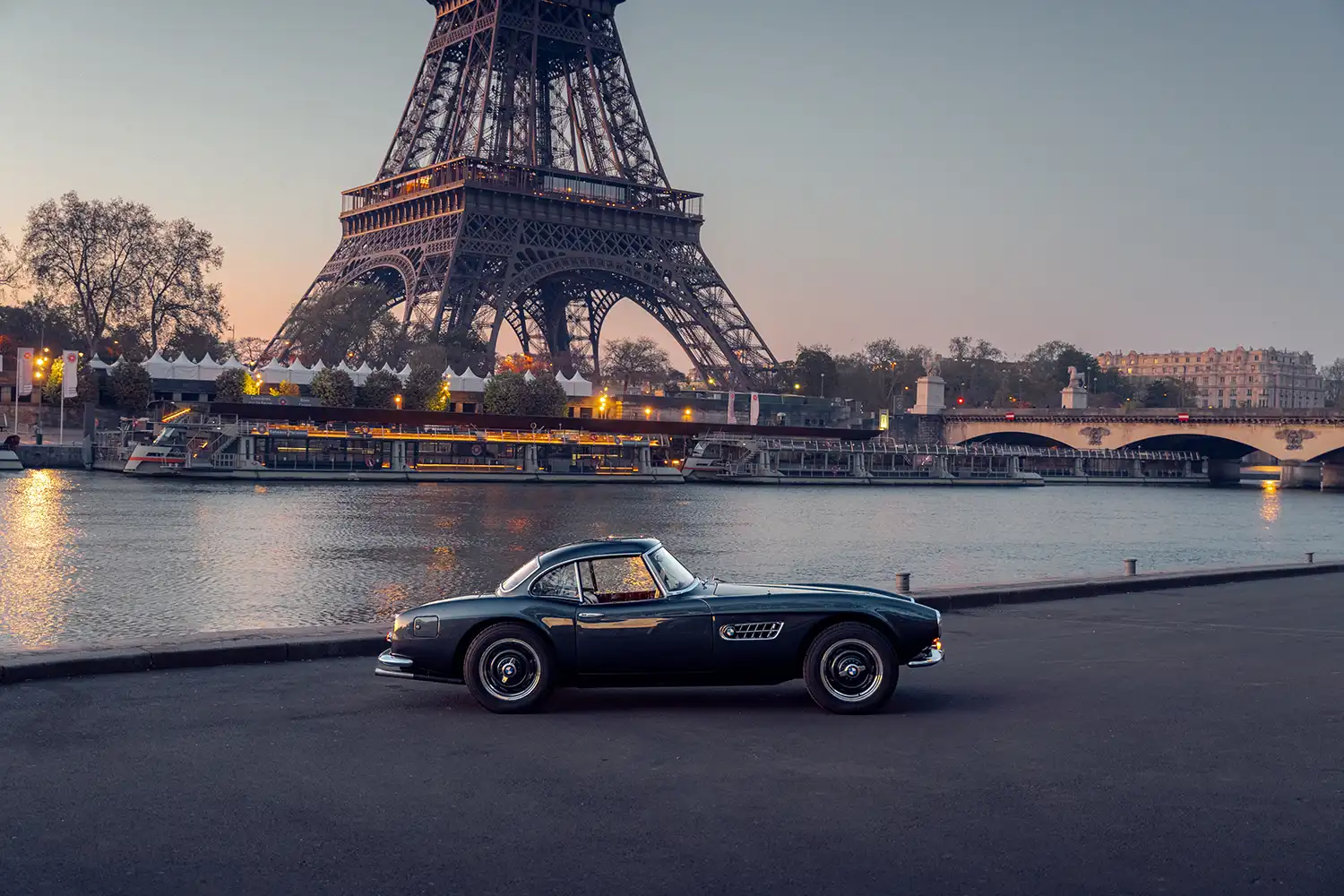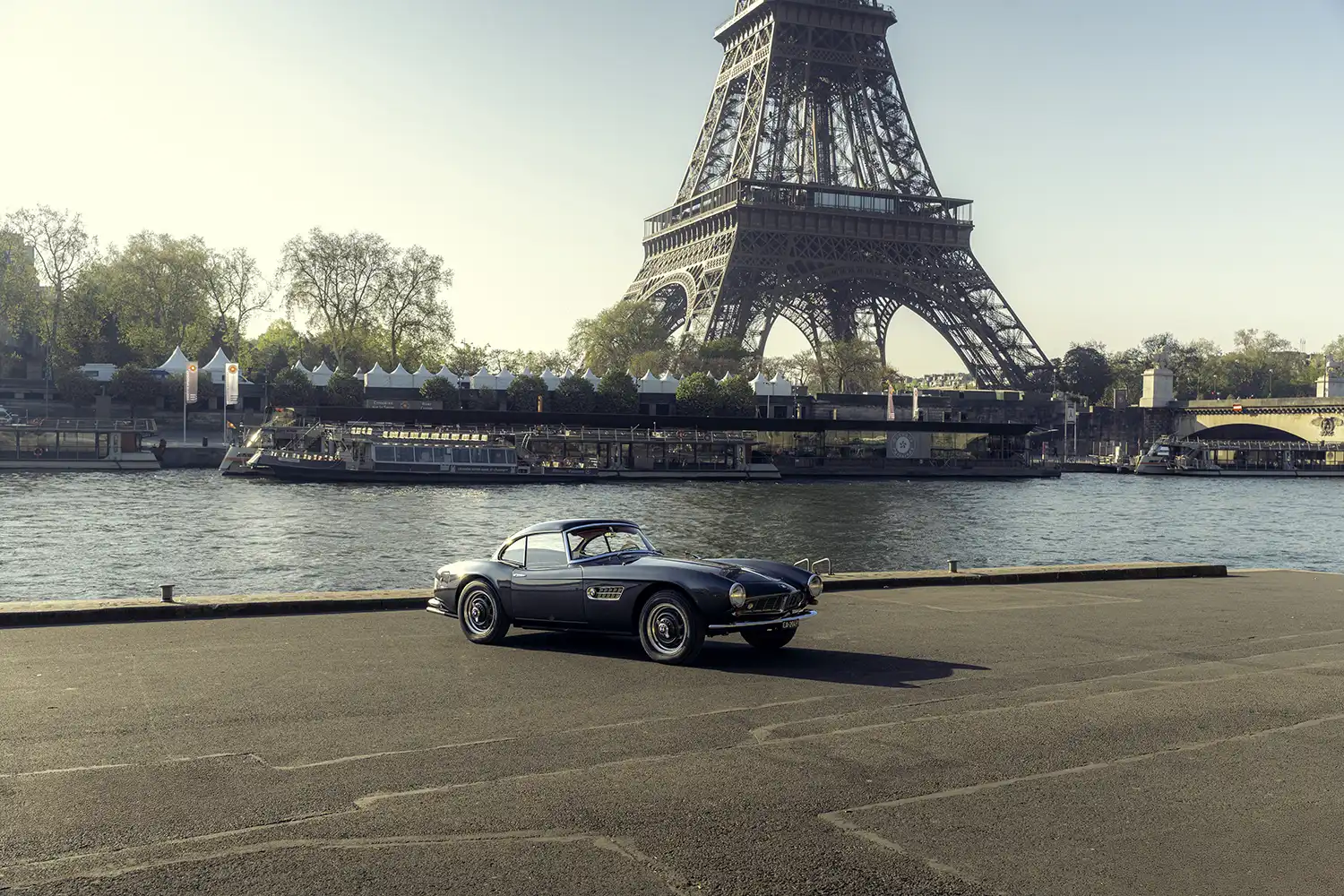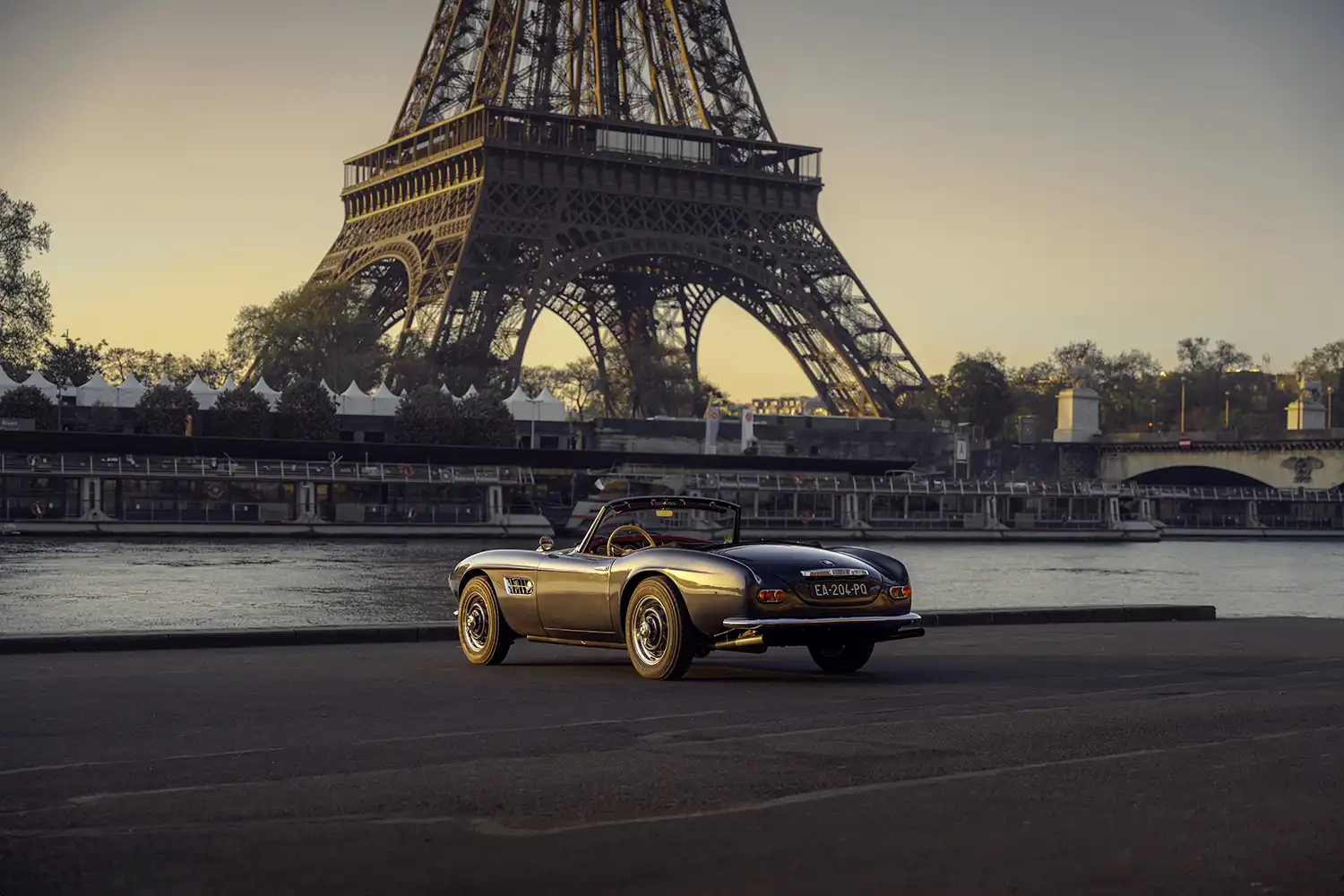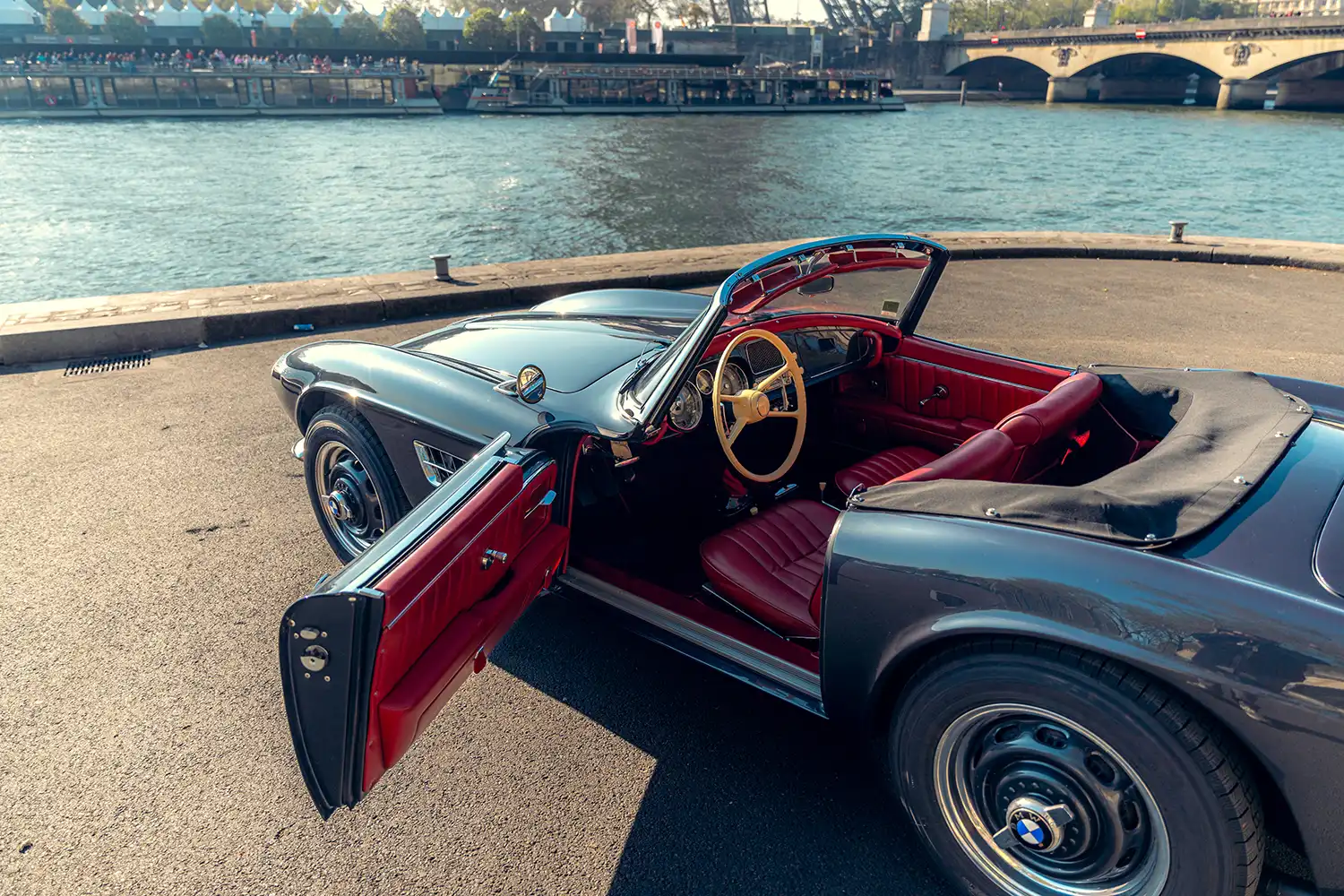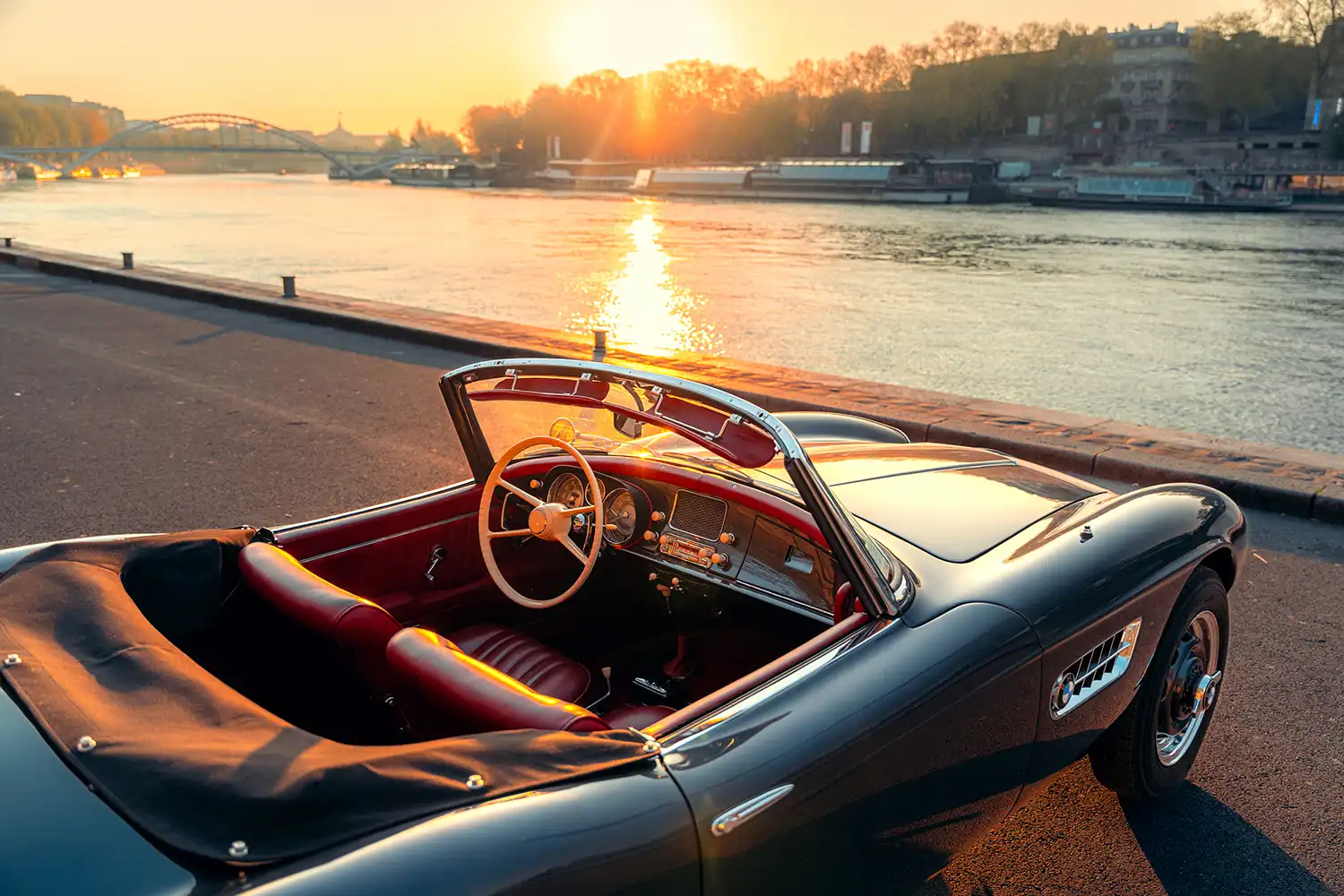
The 1957 BMW 507 Roadster classic car stands as a testament to automotive elegance and engineering ambition. Originally conceived by automotive impresario Max Hoffman, this model aimed to re-establish BMW’s presence in the post-war luxury sports car market. BMW’s pre-war success was primarily European, but the company recognized the critical importance of the United States for future expansion. Hoffman’s proven track record with other European manufacturers underscored the potential demand for such a vehicle in the American market.
Full details & bid : rmsothebys.com
Design and Early Challenges
BMW utilized existing components, including an all-aluminum Type-507/1 3.2-liter V8 engine from their saloon range. They also used a shortened and strengthened version of the 503’s chassis frame. Despite these cost-saving measures, the exquisite aluminum bodywork, styled by Albrecht von Goertz, proved expensive to produce. The initial optimistic production cost estimates led to an unexpectedly inflated selling price. This high price point unfortunately limited the 507’s market appeal.
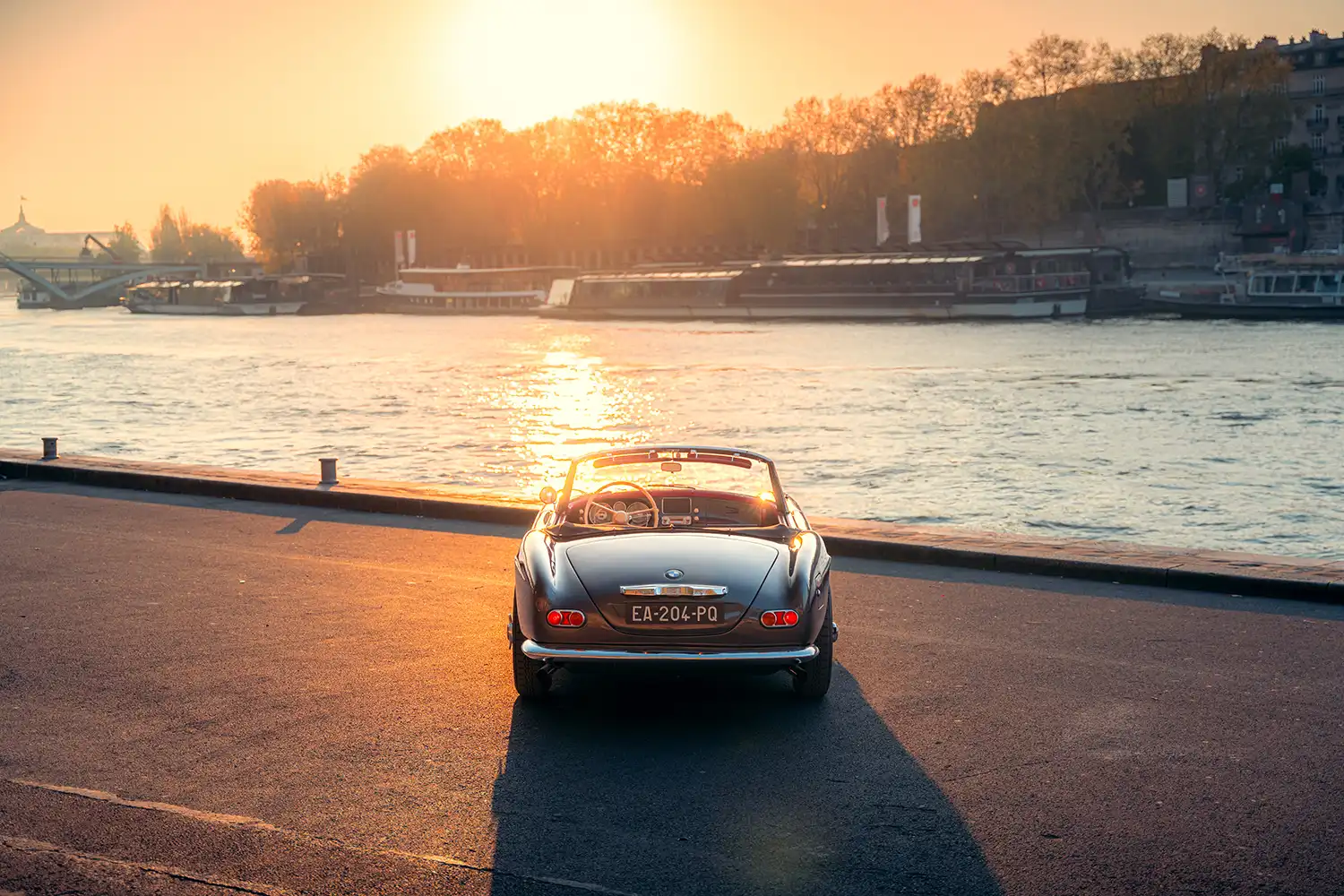
Performance and Market Position
Unveiled at the 1955 Frankfurt Auto Show, the car received overwhelmingly positive reactions. However, its eventual US sales price significantly exceeded Hoffman’s initial suggestion. It was also remarkably more expensive than comparable Jaguar XK models and even surpassed the cost of a Mercedes-Benz 300 SL. Furthermore, the 507’s performance figures, with a 0-60 time of over 11 seconds and a top speed of 122 mph, were markedly slower than the 300 SL. This difference in performance created a significant competitive disadvantage.
A Rare Production Run
Only 252 examples of the 507 were built between 1956 and 1959, a stark contrast to the combined 3,258 units of the 300 SL Gullwing and Roadster. The first 34 were designated Series I, with the subsequent 218 chassis termed Series II. While the modest 150 horsepower output remained largely unchanged, later Series II cars benefited from practical improvements. These included a smaller fuel tank for increased trunk capacity and an improved dashboard layout. They also featured greater seat adjustment and a rear parcel shelf.

A Distinguished Example: Chassis 70080
This specific 1957 BMW 507 Roadster, an early Series II car, incorporates the ergonomic enhancements introduced from mid-1957. It also features desirable optional front disc brakes and Rudge center-lock wheels. Although its early history is largely unknown, a BMW Classic birth certificate confirms its original Graphite finish and factory hardtop. The car was delivered new in Rome in September 1957. By the mid-1980s, it was in the ownership of Albert Keller in Munich, Germany.
Unparalleled Restoration and Enhancements
In the early 2010s, noted French collector Henri Chambon acquired chassis 70080. He then entrusted the car to respected engine authority Raphaël Rondoni for an exhaustive two-year restoration. This meticulous process included a comprehensive engine rebuild by Bugatti master craftsmen Ventoux Moteurs Ingénierie. The work, costing over €50,000, involved machining the cylinder block and head faces. It also included fitting a new steel crankshaft, cylinder liners, and high-compression forged pistons. An uprated camshaft and new high-tensile cylinder head studs were also installed.
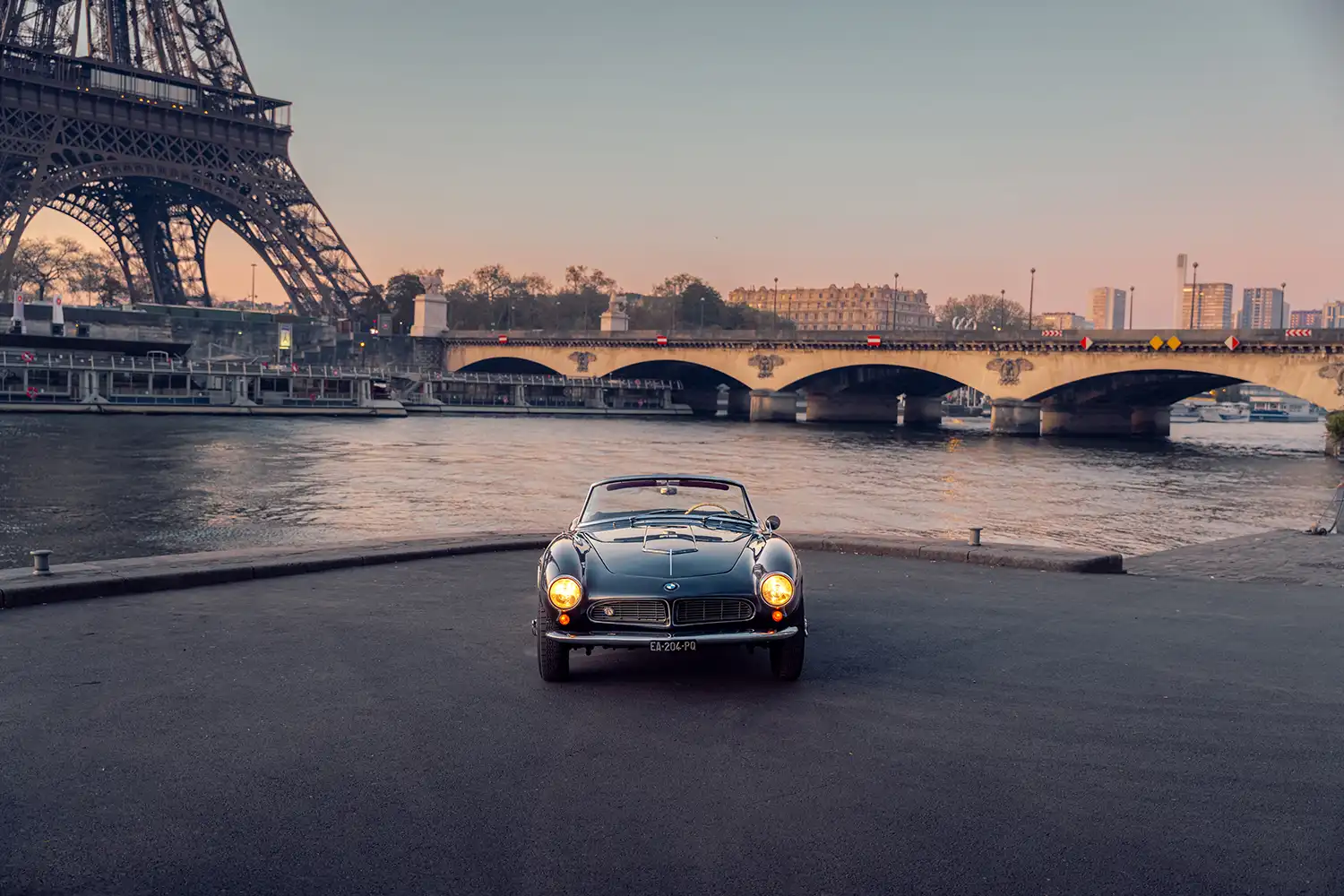
Power and Performance Upgrades
The cylinder heads received new titanium valves, valve springs, and beryllium bronze valve seats. Further machining to the combustion chambers was also performed. The lubrication system and oil pump were appropriately uprated for enhanced reliability. All ancillary components, such as the water pump, starter motor, and carburettors, underwent complete overhauls. The distributor was converted to electronic ignition for improved practicality. Finally, a custom-made tubular exhaust system was fitted, boosting performance and reducing weight. Upon completion, the engine produced an impressive 225 horsepower, a significant increase over the original output.
Interior Refinements and Driving Comfort
Concurrent with the engine work, accomplished upholsterer Raymond Ratto re-trimmed the car with red leather seats and red carpets to original 507 specification. A new black Alpaca hood, hood bag, and red tonneau cover were also fitted. The rear luggage area was re-trimmed with grey carpet. To further enhance practicality and driver enjoyment, electronically-assisted power steering was added. An alternator was also installed to ensure more consistent and reliable electrical charging. The original factory items for the power steering accompany the car.
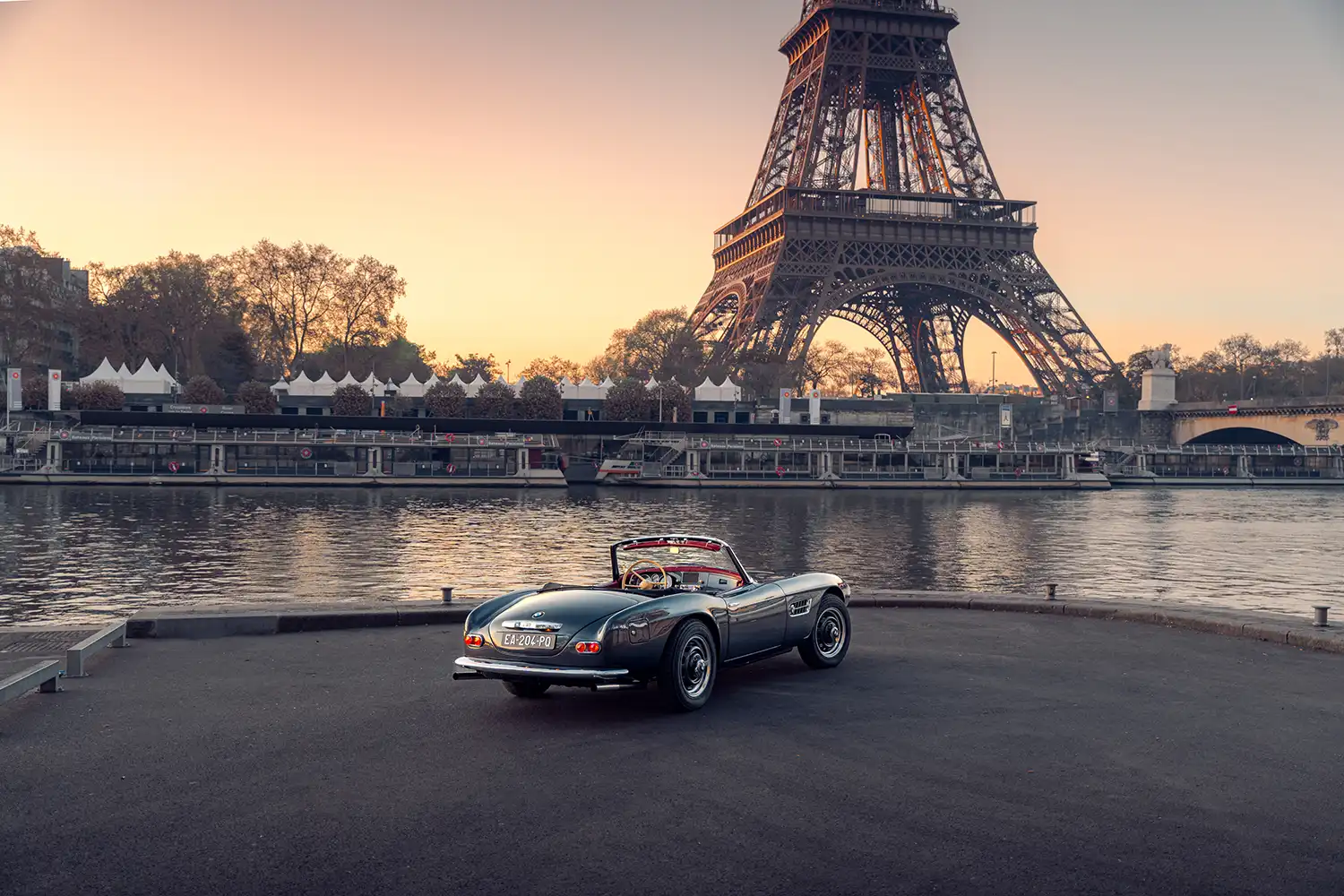
Continued Care and Legacy
Following the restoration, the car provided M. Chambon with years of exhilarating, trouble-free motoring, covering 25,000 kilometers. In 2021, the engine was removed for routine inspection and disassembly by Ventoux Moteurs. This included fitting new cylinder liners, replacing all shell bearings, and modifying the tappets. The camshaft bearing lubrication system was optimized, and spark plug inserts were fitted. The car also underwent a complete gearbox rebuild and an overhaul of the back axle. The consigning owner acquired chassis 70080 in March 2022. Its maintenance remains fastidious, as confirmed by a comprehensive service in July 2022.
A Superbly Appointed Grand Tourer
The 1957 BMW 507 Roadster effectively blends the aesthetic appeal of its original design with sympathetic performance and ergonomic improvements. This particular example is uniquely well-placed to handle the demands of modern motoring. Accompanied by a highly desirable body-color factory hardtop, an engine bay-mounted tool kit, and original owner’s manuals, it stands as an exquisitely maintained vehicle. This grand tourer is truly fit to grace the roads of any scenic route.
Disclaimer: Vehicle information is provided for general informational purposes only and may not be entirely accurate or complete. Prospective buyers should conduct their own thorough inspection and verification.
AI Assistance: Gemini
